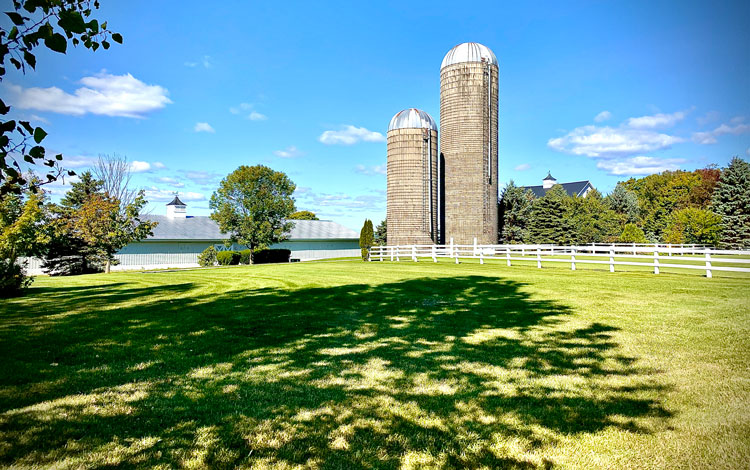
We are at the beginning of March, and spring will be here soon. The growth rate of alfalfa and small grain grasses will start accelerating, and several vertical silos will be filled with fresh and chopped vegetative material. This means that soon farmers could be affected by silo fillers disease.
Silo fillers disease occurs when people are exposed to nitrogen dioxide, an extremely toxic gas produced by anaerobic bacteria during the fermentation of nitrogenous compounds, such as proteins. Hence, the risk of being exposed to nitrogen dioxide is greatest during the spring season, when alfalfa and small grain grasses are harvested and ensiled in vertical silos to be fermented. The presence of this gas might be recognized by a burning sensation in the nose, throat, and chest.
Readers might wonder why this concern is so relevant to vertical silos. There are two main reasons for this. The first is that nitrogen dioxide is heavier than air. Therefore, nitrogen dioxide is “trapped” and accumulates within the vertical silo while it is being produced.
The second reason is that, after filling the vertical silo, the top layer of biomass has to be leveled off to ensure the proper functioning of the unloading chute. This leveling requires workers getting into the vertical silo to shovel the biomass. Because nitrogen dioxide is “trapped” and accumulated within the silo, those individuals are exposed to nitrogen dioxide soon after entering the silo.
The sad fact is that several people have died from the exposure to nitrogen dioxide. So, yes — this is a serious disease and a serious farm hazard.
Protect yourself
There are some safety precautions farmers can take to avoid intoxication with nitrogen dioxide. If a farmer must enter a vertical silo to level off the top layer or set up the unloader after filling, the best advice is to first run the silage blower for at least 30 minutes. If sufficiently filled, this blowing will remove the nitrogen dioxide from the vertical silo. Having said that, since nitrogen dioxide settles down on the silage surface, be aware that a forage blower may not adequately ventilate a partly filled silo. In this case, remove the upper chute doors down to the level of the settled silage.
We have developed an educational video at Virginia Tech describing the risks and prevention measures associated with silo fillers disease. We invite all readers to watch the video, follow best safety practices, and commit to having a safe harvesting season.








